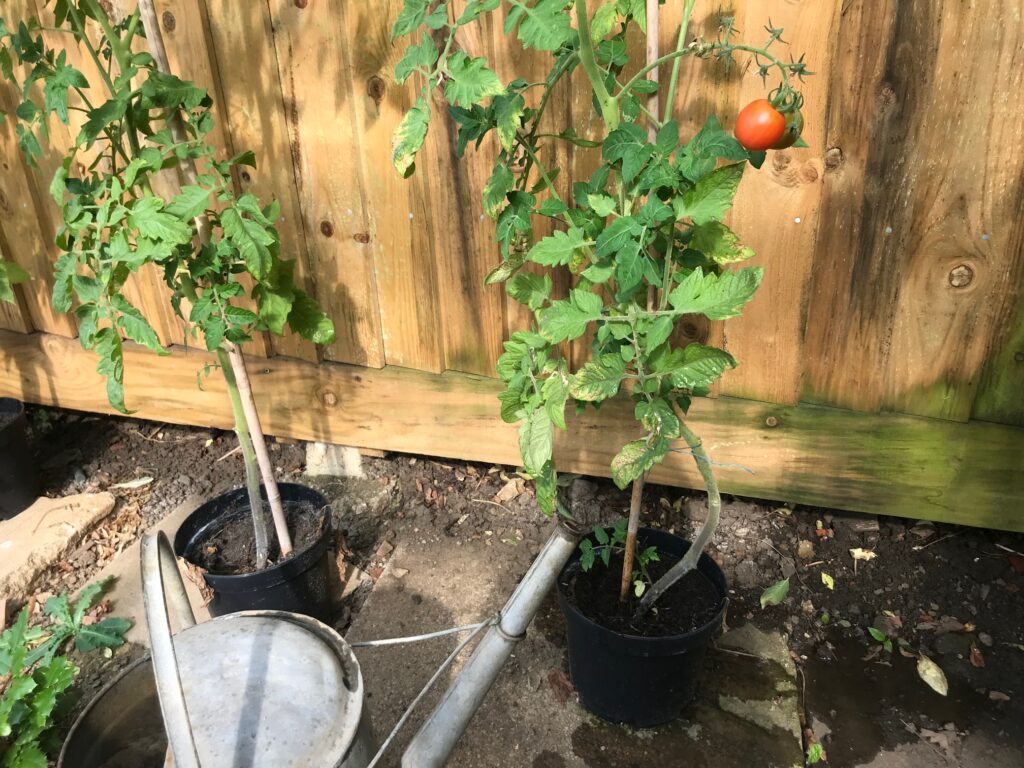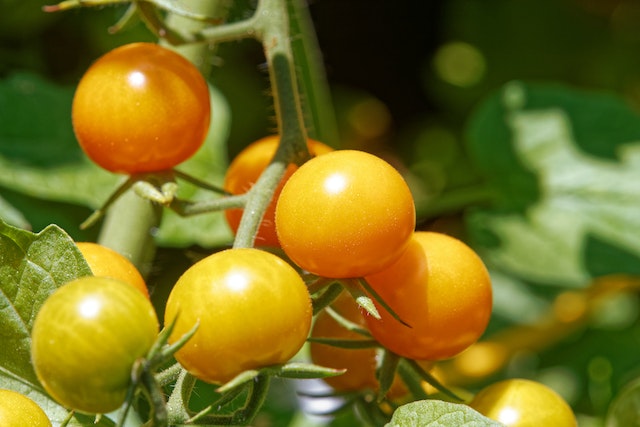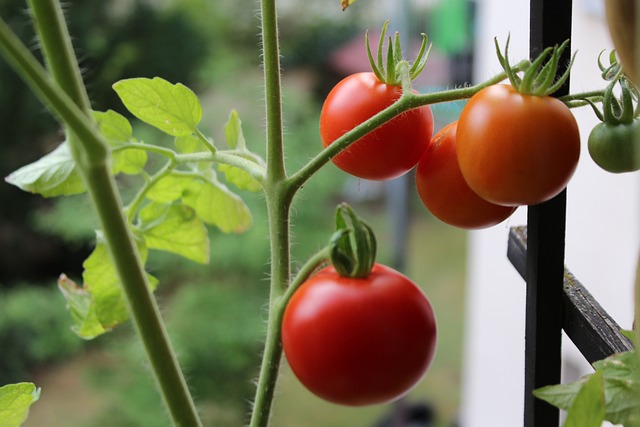There’s nothing quite as disappointing for a gardener than eagerly tending to their tomato plants, only to discover that some of the tomatoes have split open. So why do tomatoes split when growing? It leaves many growers scratching their heads. In this blog post, we’ll delve into the reasons behind this all-too-common occurrence and explore how you can prevent it from happening in your own garden.

Uneven Watering of Tomato Plants
One of the main causes of tomato splitting is irregular watering. When plants do not get enough water followed by a sudden surge of moisture, the skins of the tomatoes can’t expand uniformly, leading to cracks. To prevent this, it’s important to maintain consistent and adequate moisture levels in the soil.
Proper watering techniques can greatly reduce the risk of tomato splitting. While it’s important to provide consistent moisture for your tomato plants, it’s equally important not to overwater them.
Deep, Even Watering: Rather than lightly sprinkling the plants, aim for watering sessions that penetrate the soil and reach the root zone. This encourages the plants to develop deep and robust root systems, which can better withstand fluctuations in soil moisture. When you water, apply enough water to moisten the top 6-8 inches of soil.
Watering Frequency: Consistency is key when it comes to watering tomatoes. Don’t let the soil completely dry out between watering sessions, as this can stress the plants and increase the risk of splitting. Monitor the moisture levels in the soil by checking its dampness with your finger. If it feels dry about an inch down, it’s time to water.
Mulching: Applying mulch around the base of tomato plants can help maintain a more even moisture level in the soil. Mulch acts as a protective layer, preventing evaporation and reducing weed growth. Organic mulches like straw, wood chips, or compost can be used to cover the soil around the plants, helping to retain moisture and regulate water uptake.
Irrigation Methods: Consider using drip irrigation or soaker hoses to deliver water directly to the root zone of the plants. These methods provide a slow and steady supply of moisture, allowing for efficient water absorption by the plants. Avoid overhead watering, as it can increase humidity levels and promote disease development.
Weather Considerations: Pay attention to the weather forecast and adjust your watering schedule accordingly. During periods of extended dryness or high temperatures, you may need to increase the frequency and duration of watering to prevent the soil from drying out excessively.

Rapid Growth
Another cause of tomato splitting is rapid growth. When the plants grow too quickly, the skin may not be able to keep up with the internal growth, causing it to crack. To prevent this, avoid over-fertilisation.
While it’s important to provide your tomato plants with the necessary nutrients for healthy growth, over-fertilising can cause them to grow too quickly. Excessive nitrogen can lead to rapid vegetative growth at the expense of fruit development. This imbalance between plant growth and fruit expansion increases the risk of splitting. Follow the recommended fertilisation guidelines for tomatoes and avoid excessive nitrogen applications.
Varietal Susceptibility to Splitting
Certain tomato varieties are more prone to splitting than others. Varieties with thin skins or those bred for their juiciness are more susceptible to splitting when subjected to changes in moisture levels. Consider choosing varieties that are less prone to splitting, such as those with thicker skins or known for their crack-resistance.
Hybrid tomato varieties are often bred to exhibit specific traits, including crack resistance. These varieties can offer enhanced protection against splitting compared to heirloom varieties. However, there are also heirloom varieties that have natural crack-resistant attributes. Consider both hybrid and heirloom varieties, and read descriptions and reviews to identify those with crack-resistant characteristics.
By intentionally selecting tomato varieties that are less prone to splitting, you can greatly reduce the occurrence of this issue in your garden.

Over-Ripe Fruits
Another common cause of tomato splitting is over-ripening. As the fruits mature and approach their peak ripeness, they become more vulnerable to splitting. This is especially true during periods of heavy rain or sudden temperature fluctuations.
Harvesting tomatoes at the right stage can prevent splitting. Tomatoes that are left on the vine too long can be more susceptible to cracking. Harvesting your tomatoes just before they reach full ripeness can help reduce the chances of splitting.
Extreme Environmental Conditions
Environmental factors also play a crucial role in tomato splitting. High temperatures combined with high humidity can create stressful growing conditions for tomatoes, making them more susceptible to splitting.
Provide Shade: During periods of intense heat, providing shade for your tomato plants can help mitigate the stress caused by high temperatures. Install shade cloths, row covers, or create temporary structures using light shade netting. These shade structures will help reduce the direct exposure to intense sunlight, preventing excessive heat accumulation and reducing the chances of tomato splitting.
Adequate Ventilation: Good air circulation is crucial for maintaining optimal growing conditions and minimising stress on tomato plants. Ensure proper spacing between plants to allow for adequate airflow. Pruning lower foliage and selectively thinning branches can also improve air circulation within the plant canopy. In greenhouses or enclosed growing spaces, consider using fans or ventilation systems to enhance airflow and reduce humidity levels.

Calcium Deficiency in Tomatoes
Calcium is vital for healthy tomato development. Insufficient calcium uptake in the plants can lead to a condition known as blossom-end rot, where the bottom end of the tomato fruit starts to decay. While blossom-end rot itself doesn’t cause splitting, it weakens the fruit, making it more prone to cracking when under stress. Ensure proper calcium levels in the soil through regular soil testing and using calcium-rich amendments or fertilisers as recommended.
The Takeaway On Why Do Tomatoes Split When Growing
Understanding why tomatoes split when growing allows us to take proactive measures to minimise this frustrating phenomenon. By addressing factors such as uneven watering, choosing the best crack-resistant varieties, harvesting at the right time, and managing environmental conditions, we can increase the likelihood of producing beautiful, intact tomatoes. With a little extra care and attention, we can enjoy a bountiful and split-free harvest from our tomato plants.
If you want to know more on the basics, here’s our guide to growing tomatoes.
